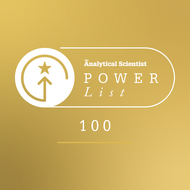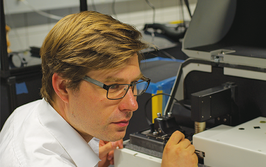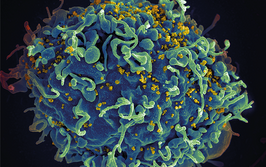Michael Lämmerhofer

Professor of Pharmaceutical (Bio-)Analysis, Institute of Pharmaceutical Sciences, University of Tuebingen, Germany
Attracting talent… Analytical science is a highly interdisciplinary field, which makes it extremely attractive. We are usually dealing with various sciences at the interface between physical chemistry, (in)organic chemistry, biochemistry (especially in bioanalysis), and materials science. We have often highly advanced instrumentation – which may be intriguing from a technical viewpoint. A basic understanding of metrology and adherence to quality assurance are required, alongside (bio)informatics skills. I am convinced that this mix of disciplines makes it highly attractive for multi-talented young people. And there are plenty of jobs to choose from…
Raising the field’s profile… Spread out to the public and tell the people the impact of analytical sciences on our society. There is no water quality, no food safety, no pharma product quality, no clinical diagnostics, personalized medicine, biomedical research, no doping control, and no safe environment without analytical sciences. It opens doors for gaining new insights into hitherto undiscovered realms and dimensions.
An inspirational leader? I have been working for decades with Wolfgang Lindner, Professor Emeritus at the University of Vienna, whose scientific attitude and friendly personality have always inspired me. Over the years he has never stopped being curious and ambitious to understand molecular phenomena. His ambition to tackle challenging problems, discipline to stay on track, work ethic, and his commitment to the youth, are key attitudes worth emulating.
Biggest challenge facing the field? As we collect more and more complex and comprehensive data in higher dimensional hyphenated technologies, integrative data processing without loss of the dimensional connectivity appears to be still a challenge and requires more attention to avoid loss of useful information encoded in our data.
Most exciting development or trend?? Multidimensional analysis; multiomics for a comprehensive view of biological systems, especially personalized medicine; and advances in single-cell analysis are highly exciting and will open new possibilities in the future. Assay specificity and sensitivity in comprehensive analysis and untargeted quantification are remaining challenges in many fields including omics.
The decade’s most important development? Hard to say – probably the evolution of artificial intelligence and machine learning, allowing us to utilize the large amounts of data that we can generate in analytical sciences.
Biggest challenge facing the field? As we collect more and more complex and comprehensive data in higher dimensional hyphenated technologies, integrative data processing without loss of the dimensional connectivity appears to be still a challenge and requires more attention to avoid loss of useful information encoded in our data.


















